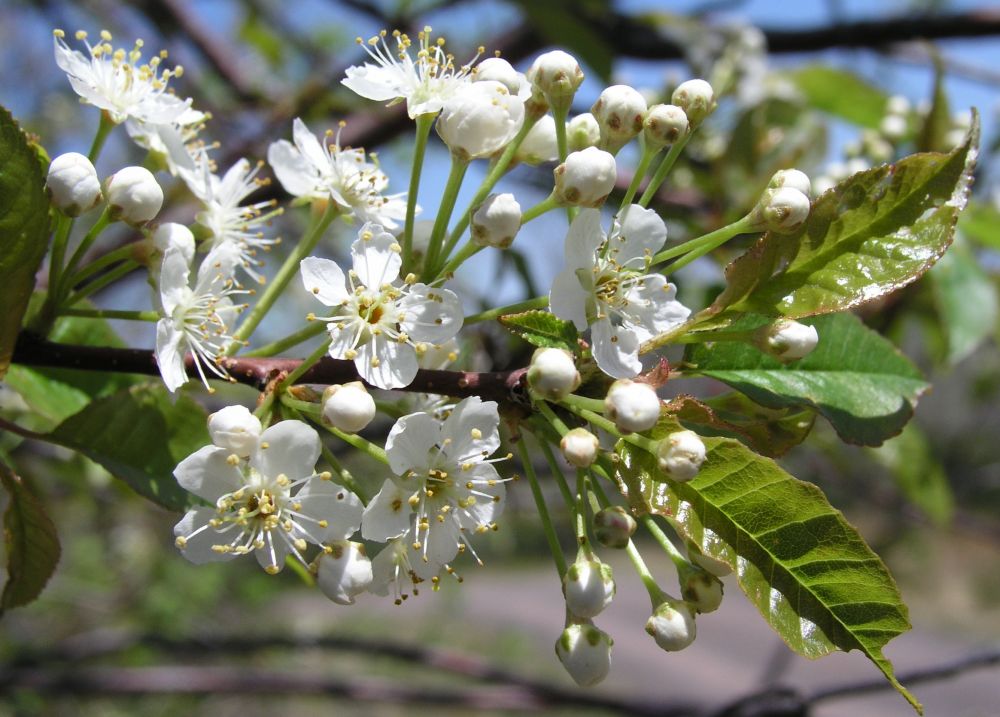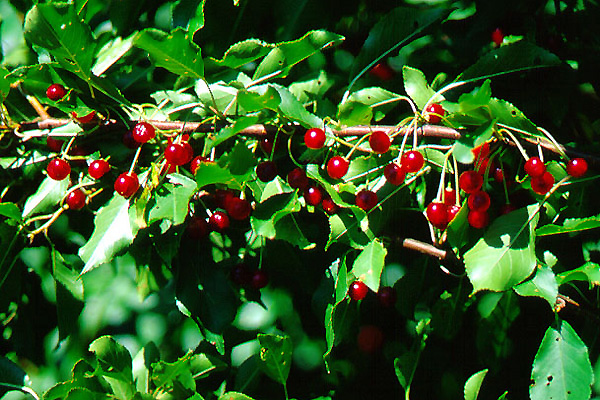The Canada plum, a member of the rose family, is a small-growing native fruit tree with a narrow form. The tree will reach 6 to 9 metres in height at maturity, and has dark, smooth bark, clusters of white flowers in early spring, and leaves that turn dark red to purple during the fall.
This tree does best in moist, well-drained soils but can adapt to a variety of soil types. It can also do well in shady locations, but like most edible trees will produce more fruit in areas where it is exposed to full sun.
The fruit of the Canada plum tree, which ranges from yellowish-red to red, ripens from August to September and is about three cm in diameter when ready to pick. Plums tend to be a bit more sour than the typical grocery-store varieties, and can be eaten fresh off the tree, or can be used to make preserves or pie fillings. But you’ll have some competition from birds who also enjoy this tasty treat!

Pin cherry (Prunus pensylvanica)
The pin cherry is another great native fruit tree that can be purchased as part of LEAF’s edible kits this fall. Reaching a size similar to that of the Canada plum at maturity (6-9m) and also of the rose family, this tree can be found across our country, from British Columbia in the west to Newfoundland and Labrador in the east.
Similar to the Canada plum tree, the pin cherry likes moist, well-drained soils, but requires a sunny place in your yard in order to thrive. This tree is sometimes referred to as “fire cherry” for its value as a reforesting agent after forest fires, or “bird cherry”, since many avian species like to dine on its appetizing fruit.

Pin cherry trees flower from April to May, and their fruit will ripen in August. The cherries reach a size of 6mm in diameter, are rather sour and so are best used in the making of pies and jams rather than eating raw.
Click here for more about native and heritage species through LEAF - and to find out how you can order them this fall.
